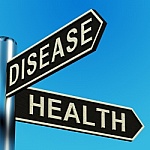Modern life continues to provide advances that speed up the pace of everything. There are conveniences everywhere, from fast processed foods to electronics to microwaves. And yet, while everything has gotten faster, one thing hasn’t changed: Nature and our human bodies need balance.
Often, advances that speed up the pace of life can also upset the balance so necessary for our health… and this is often seen in the form of toxic overload.
Toxins lodge in your cells, soft tissues, and muscles, and overwhelm your entire immune system.
For several years, we have seen increasing imbalance in the form of growing rates of cancer, Alzheimer’s, autism, diabetes, fatigue, obesity, heart disease, allergies, candida and infertility. Almost all of these can in some way be linked to toxic overload in our bodies.
So what can we do?
While it’s impossible to avoid all of the toxins that come with modern life, you have the power to create balanced health!
First, let’s take a brief look at where many of these toxins are coming from:
- Air
- Water
- Food
- Drugs and tobacco
- Household and personal care products
- Stress and negative emotions
There are two types of toxins, endogenous and exogenous toxins:
- Endogenous toxins are those produced by the body as a by-product of biochemical processes, and may tend to accumulate in the joins or various muscle groups.
- Exogenous toxins are toxins ingested or absorbed by a person into the body from external sources, including food, water, air, contact etc. This page is primarily concerned with exogenous toxins, although many of the methods of detoxification (e.g. light therapies, phospholipid therapy, detox patches) are capable of removing both types of toxins.
It could be argued that the toxins expelled by bad bacteria and fungi (e.g. Candida albicans) into the digestive tract, which are distributed round the body by the blood stream, are a form of exogenous toxin, even though they originate from within the body – as they are not produced by the body’s own ‘natural’ biochemical processes. However, if bad bacteria and fungi species are inside the body, then any poisons they produce could be argued to be endotoxins. Such excretions are thus classifed as ‘exotoxins’ and are examined further down below.
Technically speaking, there is a third category of toxins, known as autogenous toxins. These are the toxins that one is born with, in the form of pathogens or toxic compounds, generally from environmental/dietary exposure over multiple generations. As discussed on the Causes and Effects page, these are usually passed down from the maternal line, from the mother to the baby in the womb. However, these are in a sense just exogenous toxins that happen to be absorbed from the mother rather than from the environment.

